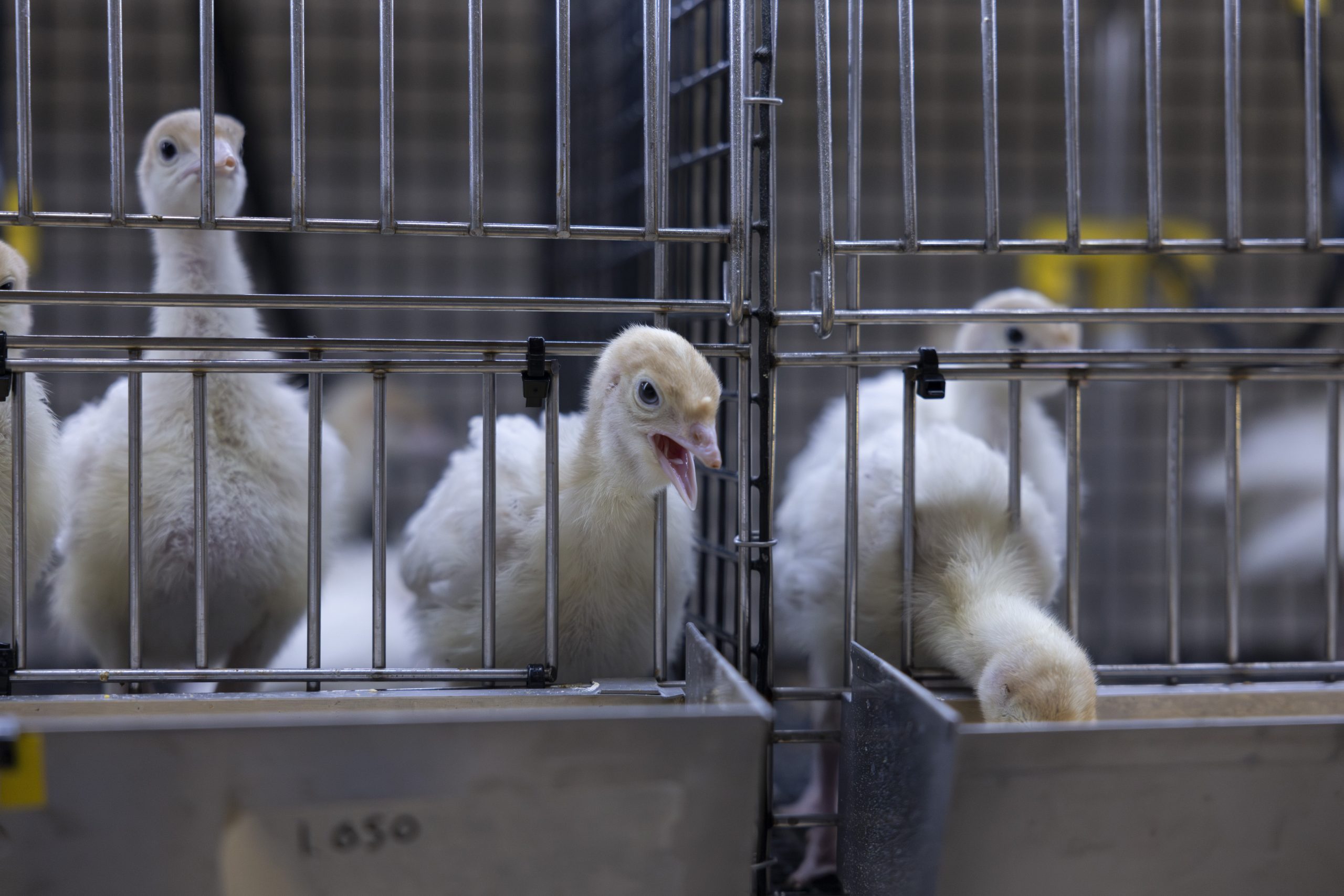By John Lovett
University of Arkansas System Division of Agriculture
Poultry scientists with the Arkansas Agricultural Experiment Station are working to decrease the time and cost to diagnose an emerging disease affecting the turkey industry.
Streptococcus gallolyticus, which secretes toxins that cause organ damage and death, has been an issue for the turkey industry for at least seven years. But the bacterial infection has become more troubling in the past five years, said Billy Hargis, Distinguished Professor of poultry science and director of the John Kirkpatrick Skeeles Poultry Health Laboratory. The lab is part of the experiment station, the research arm of the University of Arkansas System Division of Agriculture.
Turkeys accounted for $443 million in cash farm receipts for Arkansas in 2021, according to the latest Arkansas Agriculture Profile. Arkansas is third in national ranking of turkey production, according to the latest USDA Turkeys Raised report.
Observations in just the past three months show new neurological symptoms from an evolved form of the bacteria, Hargis said. Usually, the signs of a streptococcus gallolyticus infection are vascular collapse with lesions in the heart, liver and spleen of turkeys. Hargis said the new organism is causing neurological symptoms caused by encephalitis and meningitis. Encephalitis is inflammation of the brain. Meningitis is inflammation of the membranes, called meninges, that surround the brain and spinal cord.
“It’s clearly a different pathotype, that did not exist until a few months ago,” Hargis said. “It’s new. It’s the same species, but different organism and there’s something different about its ability to cause disease.”
While this bacteria species is linked to meningitis in humans, there is no evidence that it is zoonotic—meaning a disease that moves from animals to humans, Hargis said.
“No linkage has been made between turkey and human conditions with this,” Hargis said. “The genome of these bacteria is large, so they can have a lot of differences for human-host adapted versus poultry-adapted. There’s no evidence that humans get this from turkeys.”
The pathogen generally affects turkeys that are two to three weeks old, with the majority being nine to 14 days old. Hargis said their research has shown that it is easy for the disease to be transmitted in newly hatched turkeys and can lead to death in as little as two weeks. University of Arkansas poultry science Ph.D. student LaTasha Gray, who has been working with Hargis on the research, said based on their experiments so far, streptococcus gallolyticus has a respiratory or oral route of transmission.
“We suspect that much of the transmission probably occurs in the hatchery because of this time frame,” Hargis said. “We’ve shown that it is very easy to transmit in day-old turkeys and some of these flocks relapse, which also suggests that conventional vaccines are probably not the answer due to the fact there are so many relapses.”
Experiment station research shows that relapse infections happen in 5 to 7% of adult flocks. Antibiotics can help manage the disease to decrease mortality to between 3 and 7%. Antibiotic-free flock mortality ranges from 25 to 30%.
Despite intense efforts by industry and academic researchers to develop a vaccine, so far, there has been no success. In part, Hargis said, this is due to the bacteria’s slimy defense mechanism—a layer of mucous.
“This group of organisms have a mucin-like layer that protects it from the immune system,” Hargis said. “They’re nasty little creatures.”
Mapping the genome
For diagnostic validation of the bacteria in suspected infections, Gray is working to develop what Hargis said is a “straightforward way” of culturing the bacteria that is “surprisingly hard to grow.” To cut down on the cost and time it takes to process a sample, Hargis and Gray are working with Randy Moore, director of the Division of Agriculture’s Veterinary Diagnostic Laboratory, and Tim Johnson at the University of Minnesota to sequence the DNA of Streptococcus gallolyticus for a fully assembled genome. Johnson is a professor and director of research and development at the University of Minnesota’s department of veterinary and biomedical sciences.
By sequencing the genome, otherwise known as a DNA fingerprint, Hargis said they will be able to use a common lab test that will be specific for not just Streptococcus gallolyticus but its three subspecies. That common lab test is a polymerase chain reaction, or PCR test.
“Once we have that, we can get an answer in a few hours for about $30, rather than waiting a week and a cost of about $40,” Hargis said of the assembled genome. “That’s important because you have to identify it if you want to do anything about it.”
The research is supported in part by members of the turkey industry.




